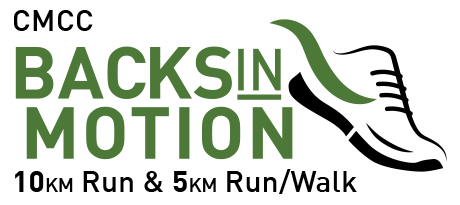In this second posting on this topic, I will attempt to bring together some of the latest research that I have found regarding a very controversial topic of respiratory system weakness. In other words, there is something about your respiratory system that is limiting performance. How does this happen?
I propose, here, a different type of “zoning”. Most people talk about fat burning zones, or carb burning zones, or threshold power. I propose here zoning based on respiratory mechanics, and, especially if your primary weakness is based on respiratory mechanics.
You say what???
Many, many coaches have shot me down for making such a comment. They say that the respiratory muscles are sometimes insignificant in the overall production of a PB performance. Many of these traditional coaches also think that to succeed, you must be training hard or long all the time, and you must have a winning attitude. I don’t disagree with the psychological aspect of a PB performance, but instead of training hard or long all the time, we need to train smart.
Could it be that my respiratory system is limiting my performance?
Let me give you a very, very extreme example. There is a great athlete that I know of, and he suffers from allergy problems. He is running an early season race, when pollen is at its greatest during the year. He is capable of a 1:10 half marathon. However, the pollen situation is particularly bad that day. And he ends up running a 1:17 half marathon. Why is that?
In the above example, the allergy symptoms may have limited his air (and subsequently, oxygen intake). Perhaps, there was some sort of constriction happening with his esophagus, resulting in limited airflow down to the lungs. He wanted, however, to still run the 1:10 half marathon; however, to sustain that pace, he would have needed the oxygen delivery system to be performing to its best capabilities. And due to the allergies, it wasn’t. The human body is extremely smart. If you constrict the amount of oxygen, and you push the envelope of performance, you can’t keep supplying the limited supply oxygen to the skeletal muscles. The body has a hierarchy of oxygen and energy delivery; it keeps vital functions well ventilated and energized first before supplying the less important areas, such as your hamstrings or triceps, with the oxygen for energy (ATP production).
Okay, I don’t have allergies, give me another example:
That’s fine. What if the amount of air isn’t being constricted by an allergic reaction, but a simple problem of a weak diaphragm and the supporting respiratory muscles, such as the intercostals?
I present you my first case study… on myself.
Throughout the fall, when I started to focus on my running after triathlon season ended, I noticed that I felt very breathless during my runs (almost as though I was panting), despite exhibiting a very low heart rate and running a very slow pace. So, I decided to ask some of my real exercise physiologist friends to hook me up with some physiological testing, especially for the respiratory system.
What the testing showed me:
First off, let me describe my running ability. I ran a 19:16 5km earlier in the season, and my half marathon PB is 1:31. The equivalent pace on a treadmill for that half marathon is around 8.6 mph.
Secondly, when I performed the testing, the first sign of weakness wasn’t in my heart (drifting heart rate), or my legs (tiredness or feeling like bricks), it was in my breathing. Subjectively, I felt that my breathing started become shallower and shallower as the incremental test wore on.
Empirically, I confirmed this after the test while performing a bit of analysis on the data. Here is a brief discussion of the results:
Basic Physiology 101 with Respiration:
The absolute amount of ventilation into your lungs (absolute volume of air per minute) can either be supported by increasing the amount of breaths per minute (Respiration Frequency, RF, in breaths per minute), or the amount of air per breath (Tidal Volume, TV, in millilitres per minute). The test that was done below included an initial ramp-up to exhaustion (up to 30 minutes), and a secondary ramp-up as well (from 30 minutes to 50 minutes).
Keeping in mind the previously mentioned equation: Amount of air into lungs = RF x TV
If you look at the results that I have plotted below, the most shocking thing is that the Tidal Volume (or the strength of my respiratory muscles) peaks at its highest point about 13 minutes into the test, which corresponded to around 6.8 mph on the treadmill. After that, to support the amount of air into the lungs, RF (or the number of breaths per minute) increases to support the air.
This objective data confirms what I thought all along – the first sign of weakness was in the respiratory system. At 6.8 mph, my legs felt fine, and my heart rate was stable.
The decreasing TV and increasing RF is manifested physically as shallower and shallower breathing, until you reach a state of panting.

Why does it matter? Shallow versus Deep – what’s more efficient?
Why does it matter, you might ask? You can think of it like this: the shallower your breath, the quicker O2 and CO2 are shuttled in and out of the lungs. There is not much time for a full ABSORBPTION of the oxygen, and a full EXHALATION of the CO2. As a result, your body is not being entirely efficient with the absorption of oxygen if you start to increase your respiration frequency.
If you hold your breath in, even for a split second, it might feel very unnatural, but it allows for the oxygen to be absorbed by the alveoli blood supply at the bottom of the lungs. The Alveolus structure is the primary location for the gaseous exchange in your lungs, where oxygen is absorbed and the carbon dioxide is ridded of. Think about it – if you take shallow breaths, your lungs won’t fill as nicely, and what are the chances that all the oxygen would make it down into your alveoli for absorption?
Conclusion:
While I am not going to talk about how I should approach this limiter of mine, as I’m not even sure yet, I need to start training at a point where I do not fatigue my respiratory muscles, to ensure that they are performing at their best state and that they recover in time for the next trainng session. That is the only way to improve. If you over fatigue the muscles or the entire system, you always leave the respiratory system in a state of catabolism, and it will never become stronger (think: overtraining).
References:
Influence of endurance exercise on respiratory muscle performance
CLAUDIO PERRET, CHRISTINA M. SPENGLER, GINETTE EGGER, and URS BOUTELLIER
Exercise Physiology, Institute for Human Movement Sciences, Swiss Federal Institute of Technology Zurich and Institute
of Physiology, University of Zurich, CH-8057 Zurich, SWITZERLAND
” The Effects of Tidal Volume and Respiratory Rate on Oxygenation and Respiratory Mechanics During Laparoscopy in Morbidly Obese Patients ”
Juraj Sprung, MD PhD*, David G. Whalley, MB ChB, Tommaso Falcone, MD,, William Wilks, RT, James E. Navratil, MD, and Denis L. Bourke, MD||
*Department of Anesthesiology, Mayo Clinic, Rochester, Minnesota; Department of Anesthesiology, The Cleveland Clinic Foundation, Naples, Florida; Department of Obstetrics and Gynecology, Minimally Invasive Surgery, The Cleveland Clinic Foundation, Cleveland, Ohio; and ||Department of Anesthesiology, University of Maryland, and Veterans Administration Medical Center, Baltimore, Maryland
Nunn JF. Applied Respiratory Physiology (3rd Edition). Butterworths 1987 West JB.
Respiratory Physiology (4th Edition). Williams and Wilkins 1990





















Hello Arthur K. Your article was very interesting, however there was one incorrect fact you mentioned in your “Could it be my respiratory system is..”. You mentioned about constriction of the esophagus. I’m sure this was a slip-up. The esophagus is a tube leading down into your stomach, whereas the trachea and bronchial (mainstem bronchus and its branches as it goes down into the lungs from bronchioles to the terminal respiratory unit or alveoli where gas exchange takes place). Normally the bronchioles either get restricted (constriction) making it difficult to breathe in as the tube is narrowed it lets in less oxygen, or there is accumulation of secretions which also acts as restriction, or both–as we see in the allergic patient.
I am a retired respiratory therapist, and hope this knowledge was helpful.
Hey Sheryl,
Sorry, I meant the trachaea.
Anyway, here is further scientific backing about the idea of a respiratory system limitation that could potentially cause the “central governor” (Noakes) to recruit less peripheral muscles in the legs to protect the vital organs and systems.
http://jp.physoc.org/content/537/1/2.full.pdf
Journal of Physiology
Teleologically, this reflex may have as its
fundamental goal the protection of oxygen
delivery to the respiratory muscles, thus
ensuring the ability to maintain pulmonary
ventilation, proper regulation of arterial
blood gases and pH and overall organismic
homeostasis. Presumably, as the ‘vital organ’
responsible for supporting pulmonary function,
perfusion of the respiratory muscles,
particularly during physiological states in
which there is competition for cardiac output
such as heavy submaximal and maximal
exercise, has priority over the locomotor
muscles. This subservience of active limb blood
flow may be similar to that previously
established for the arterial baroreflex during
large-muscle dynamic exercise (Rowell, 1997).
Specifically, under conditions in which widespread
vasodilatation has occurred, thus
threatening the maintenance of systemic
vascular resistance and arterial blood pressure,
arterial baroreflex deactivation (unloading) will
produce a strong reflex sympathetic
vasoconstriction targeted, at least in part, at
the active limbs. This vasoconstrictor drive can
be sufficiently strong as to produce vasoconstriction
in working locomotor muscles, thus
ensuring the maintenance of arterial perfusion
pressure.